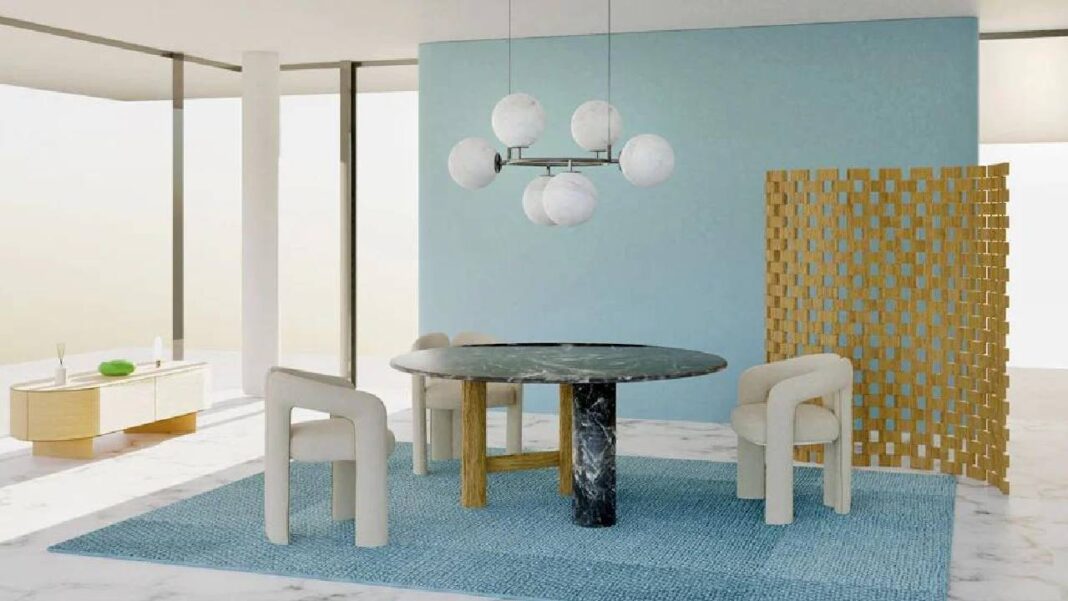PNS|HYDERABAD
Raffles Milano is all about sparking innovation by blending imagination with industry expertise. Elena Sacco, Director of Strategy, Business, Relations at Raffles Milano’s approach is hands-on, with a curriculum that combines technical skills, business acumen and creative freedom. They integrate sustainability, technology and real-world projects to prepare students for the future of design and fashion. It’s about empowering the next generation of designers to think differently and lead the way!
Excerpts from the interview
How do you strike a balance between industry-driven skill development and creative freedom in your curriculum?
At Raffles Milano, we think that genuine innovation results from striking a balance between unbridled imagination and useful industry knowledge. In addition to making sure students acquire the technical and business skills necessary in the cutthroat market of today, our curriculum is meant to encourage an open, experimental mindset. Students work through real-world problems under the direction of seasoned professionals from a variety of creative industries through a project-based learning method. In line with industry norms, this dynamic learning style pushes students to develop their critical thinking abilities, take calculated risks and hone their skills.
How is it using AI, digital technologies and sustainability into its design programmes in light of the swift transformation of the creative business by technology?
It actively incorporates sustainability and technology into our curriculum because they are crucial to modern design. To assist students remain ahead of industry trends, we use digital fabrication, virtual prototyping and AI-driven design tools. All subject areas include a strong emphasis on sustainability, which motivates students to investigate environmentally friendly materials, circular design principles and conscientious production methods. We make sure that our students graduate with the abilities to produce creative, future-proof designs that are in line with moral and environmental principles by working with sustainability specialists and technological leaders.
Could you give an example of a noteworthy project in which students worked with professionals from the industry?
We worked with Le Silla to commemorate its 30th anniversary, which was one of our most thrilling and significant initiatives. Through this program, our students had the exceptional chance to collaborate with specialists in the field to develop creative footwear concepts that honoured the brand’s illustrious history while simultaneously showcasing cutting-edge design aesthetics. Their inventiveness, technological know-how and profound comprehension of identity and market trends were all highlighted in the project’s magnificent exhibition. This is only one instance of how we include the outside world into our lessons. Experiential learning is the foundation of our program, which includes courses in fashion design, interior design, product design, visual design, photography and advertising. Partnerships such as ours with Le Silla and other well-known companies enable students to obtain practical experience in project management, client relations and real-world problem-solving.
What characteristics, in your opinion, distinguish a brilliant designer in the modern world?
Today’s outstanding designers need to have a special blend of inventiveness, flexibility and a thorough awareness of how culture and technology are changing. Storytelling, problem-solving and trend-spotting skills are all equally important. We foster these attributes by emphasising critical thinking, interdisciplinary teamwork and exposure to global influences in our curriculum. Our faculty, which is made up of thought leaders and professionals in the field, makes sure that students have the self-assurance and abilities necessary to succeed in the rapidly changing global design environment.
What is Raffles Milano’s opinion of India’s developing creative sector?
An inspiring place for design education, India’s creative scene is full with creativity, diversity, and legacy. This dynamic environment is celebrated during festivals like Kala Ghoda, which highlight the meeting point of modern design and heritage. We are incredibly grateful for the chance to interact with such dynamic cultural manifestations. Our dedication to fostering cross-cultural creative interchange is demonstrated by our recent partnership with Raffles Mumbai, particularly during events like the Kala Ghoda Arts Festival. Through this collaboration, we may jointly develop immersive experiences that combine local and global perspectives, like design workshops, faculty-student interactions and student-led initiatives. Through these kinds of partnerships, we hope to promote a genuinely global design conversation that is based on mutual learning and imaginative inquiry.
How does it intend to modify its curricula in the future to satisfy the needs of the fashion and design sectors?
Innovation and flexibility are key to the future of design education. It is always changing its programs to keep up with the latest developments in the industry. Digital craftsmanship, environmental practices, AI-driven design and entrepreneurial training are all further integrated into this. In order to give students direct access to the newest developments, we are also growing our industry collaborations. Our objective is to provide students the vision and abilities to spearhead the upcoming creative revolution as the design and fashion sectors move toward increased personalisation, ethical production and digital transformation.




